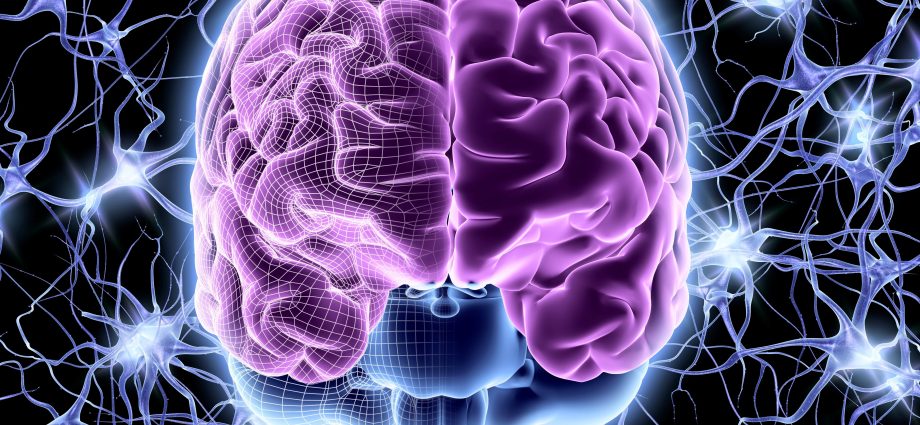Contents
The brain is the most complicated part of our body. No wonder that it still hides many secrets from us, and the discoveries made often surprise scientists. The results of the research published in the journal “Brain” turned out to be a surprise. What happens to the brain throughout the day? What turned out to be refuted so far.
- Research by British scientists has shown that the normal temperature of the human brain changes much more than we thought so far
- In healthy men and women, the brain temperature was about 38,5 degrees Celsius, in deeper areas it exceeded 40 degrees Celsius
- The researchers also found that brain temperature varied with the time of day, brain area, gender, and age
- Based on the research results, researchers developed ‘HEATWAVE’, a 4-dimensional map of the temperature of the brain
- More information can be found on the Onet homepage
The human brain is hotter than previously thought
The normal temperature of the human brain changes much more than we thought so far. The discovery was made by scientists from the Medical Research Council (MRC) Laboratory for Molecular Biology in Cambridge (UK). It also turned out that brain temperature depends, among others, on by age, sex, time of day, and organ area. Importantly, these findings challenge the widespread belief that the temperature of the body and the human brain are the same.
“From the engine in a car to the components in a laptop, mechanical systems have a tendency to get warm when they work harder. New research has shown that the same can be said about the brain – it’s hotter than previously thought, “ScienceAlert writes directly, describing the study at the outset.
The rest of the text is below the video.
Even more intriguing is the comment by the biologist Dr. John O’Neill. “For me, the most surprising finding from our research is that a healthy human brain can reach temperatures that anywhere else in the body could be diagnosed as a fever,” he says, adding: “In the past, such high temperatures were measured in people with brain injuries, but it was assumed that it was an effect of the sustained damage ».
How hot is the human brain?
The non-invasive measurement of brain temperature in healthy people was made possible by a brain scanning technique called magnetic resonance spectroscopy (MRS). For the study, scientists recruited 40 volunteers aged 20-40. They were scanned in the morning (9 am), afternoon (16 pm) and late evening (23 pm) in one day. Participants also received an activity monitor. Thanks to it, it was possible to take into account the genetic and lifestyle differences that affect the circadian rhythm of each of them.
In healthy men and women, the brain temperature was 38,5 degrees Celsius, which is over two degrees higher than that measured in the oral cavity. While the surface of the brain was generally cooler, the temperature of the deeper brain structures often exceeded 40 degrees C (the highest brain temperature observed was 40,9 degrees C). In all people, the brain temperature showed a constant variation depending on the time of day by almost 1 ° C (the highest brain temperature was observed in the afternoon, and the lowest at night).
Brain temperature map of male and female
Women’s brains were on average about 0,4 degrees C warmer than men’s brains. This difference was most likely due to the menstrual cycle – most women were scanned in the post-ovulatory phase of the cycle, and their brain temperature was about 0,4 degrees C higher than in women scanned in the pre-ovulatory phase.
The results also showed that brain temperature increased with age. Scientists suggest that the brain’s ability to cool down may deteriorate over the years. However, they note that further work is needed to investigate whether it is related to the development of age-progressing brain disorders.
But this is not the end. «We found that brain temperature drops at night before bedtime and increases during the day. There is good reason to believe that this daily change is related to long-term brain health – something we hope to investigate further, »Dr. John O’Neill noted.
- The ingredients present in the Aqua Kick Brain Focus supplement have an auxiliary effect on the functioning of the brain on the proper functioning of the OstroVit brain.
Based on the research results, scientists created a 4D brain temperature map (video below / source: N Rzechorzek / MRC LMB / Brain). They hope it can be used as a guide to what a healthy brain should look like (it was really useful, more data needs to be collected from a larger group of people).
Researchers also conducted tests on 114 people who had sustained traumatic brain injury (TBI). It turned out that in these cases the brain temperature changed even more, from 32,6 degrees C to 42,3 degrees C.
Do you want to help the brain against slow aging? Reach for a dietary supplement with Siberian ginseng, which has an adaptogenic effect. It is available on Medonet Market.
We encourage you to listen to the latest episode of the RESET podcast. This time we devote it to self-compassion – a trend that has developed very strongly in the United States, but is still in its infancy in Poland. What is it and how does it affect our daily functioning? You will hear about this and many other issues related to self-compassion in the latest episode of our podcast.










